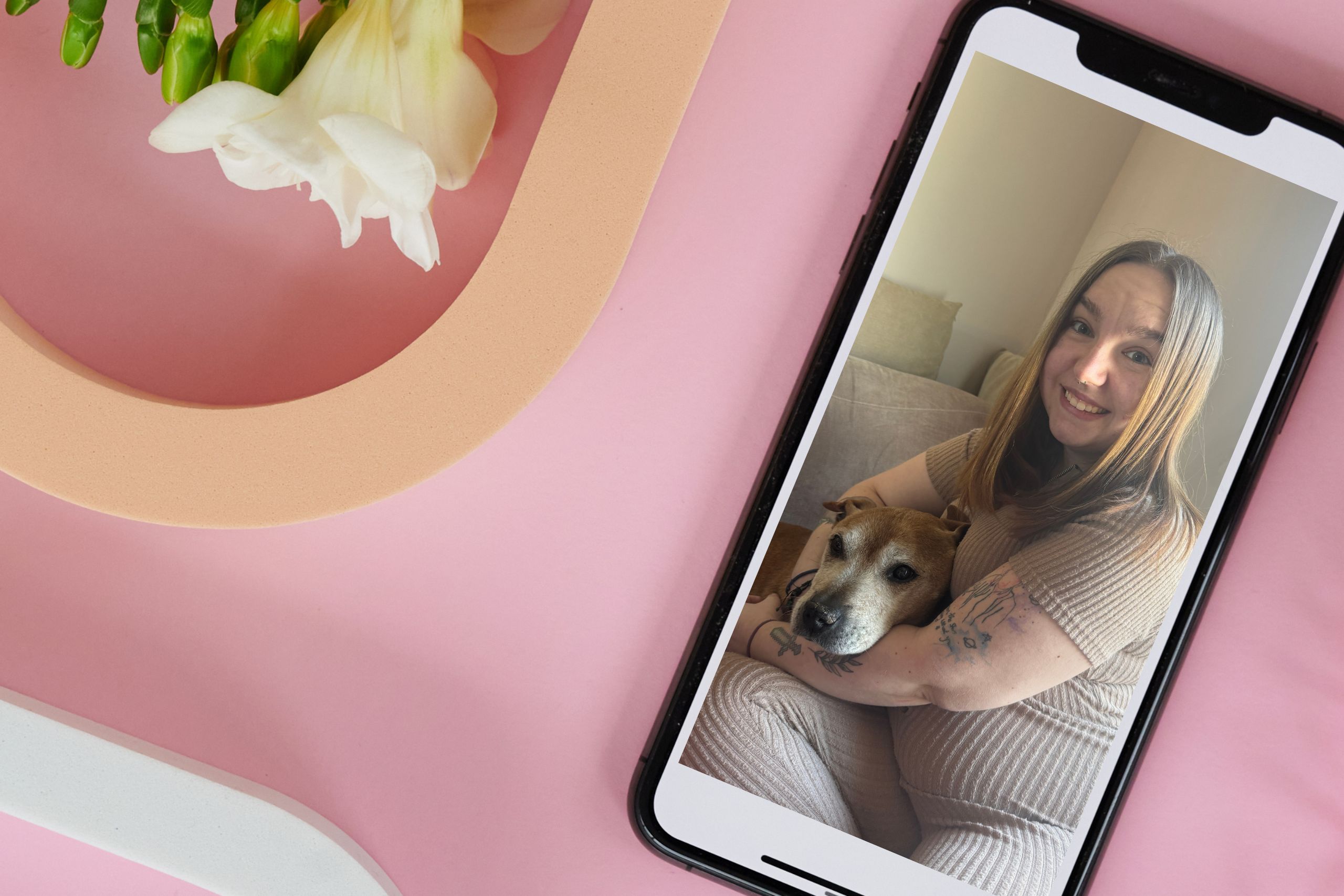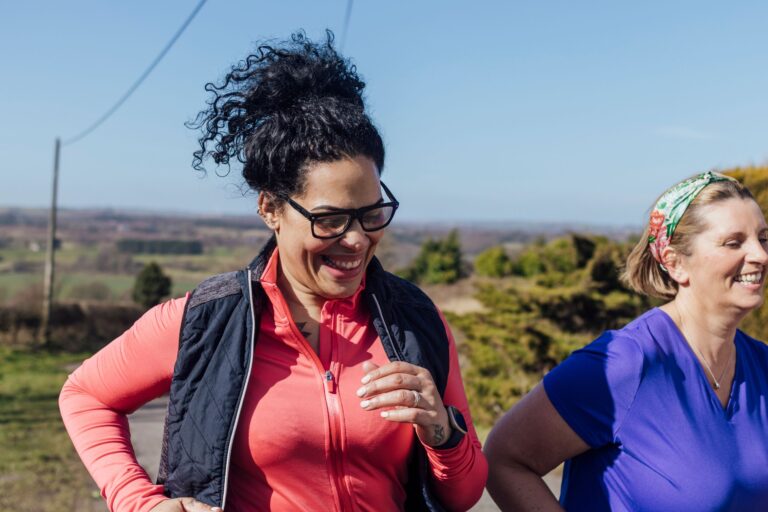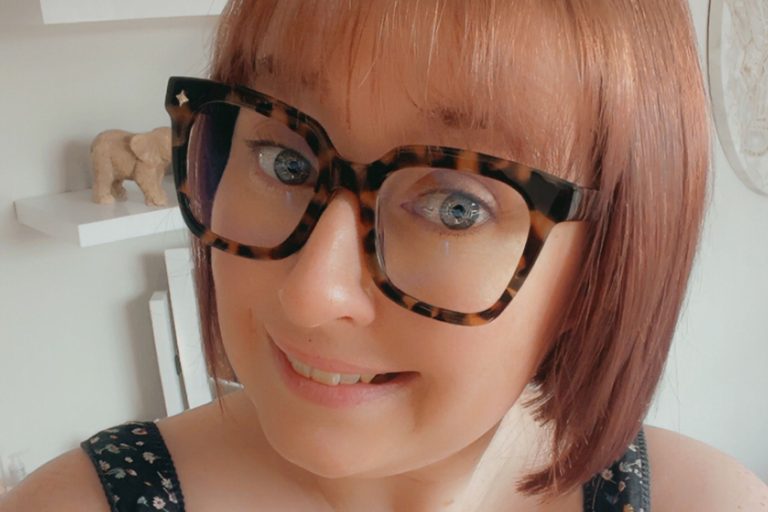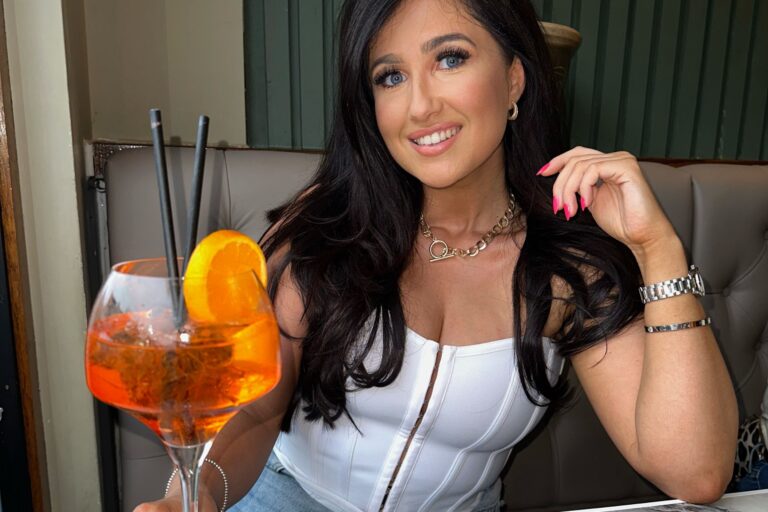About the author
I’m Aimee Heenan and, in what feels like the blink of an eye, my life has changed dramatically. Two years ago, I was a 21-year-old enjoying a day out in London. Today, I’m a urostomate, navigating life with a stoma, sharing my journey online, and finally feeling hopeful for the future.
The day everything changed
It all began in April 2023. I’d just celebrated my birthday and was excited for a day trip to London. But as I got ready that morning, something felt off – I couldn’t wee. I didn’t think much of it at first and carried on with my day, drinking extra fluids to try and ‘break the seal’.
As the hours passed, discomfort turned into pain, and I became increasingly unwell. Still unable to wee, I cut the trip short and got picked up by a family member. I tried all the tricks: hot showers, warm baths, running taps, but nothing worked.
Eventually, encouraged by my partner and family, I went to A&E. A bladder scan revealed I was holding over a litre of urine. I was catheterised and sent home with an indwelling catheter. I was terrified. No guidance, no diagnosis, and no idea if, or when, I’d be able to wee again.
Searching for answers
Just three days later, I had a scheduled laparoscopy for suspected endometriosis. We hoped it might explain the sudden urinary retention, but no endometriosis was found on my bladder. While I was diagnosed with endometriosis in other areas, it left us with even more questions.
It was overwhelming. I was recovering from my first proper surgery, trying to process a new chronic diagnosis, and had a bladder that had essentially stopped working. I felt completely lost.
My gynaecologist supported my first TWOC (trial without catheter), but I still had no bladder control. He taught me how to self-catheterise using intermittent catheters. It felt like a small win. At least I didn’t need the indwelling catheter anymore. I was hopeful my bladder would ‘wake up’ in time.
Things get worse before they get better
By July 2023, things took another turn. The self-catheters started getting stuck, and one day I couldn’t get a catheter in at all. I couldn’t tell how full my bladder was, and the pain was unbearable. With no help from the district nurses, I ended up in A&E again, in severe pain.
A scan showed at least 1.3L in my bladder. When they catheterised me, over 2L was drained. A nurse, concerned for my kidneys, pushed for me to be admitted. While in hospital, another failed attempt at self-catheterisation led us back to an indwelling catheter.
A doctor attempted to place it, struggled, and called me ‘difficult to catheterise’. He used a larger catheter size, which caused awful urethral spasms and pain. I couldn’t get out of bed.
Then came my turning point: a doctor named Mr Naffi. After witnessing the pain I was in, he urgently arranged for a suprapubic catheter (SPC). I had surgery the next day. It was such a relief!
Diagnosis at last
The following months blurred together. I underwent urodynamics testing, which showed my detrusor muscle had failed. I had no bladder sensation and couldn’t urinate at all. I was referred to Leicester General Hospital to see Dr Obloza, a urogynaecologist who was a breath of fresh air.
She performed a urethral pressure profile test and confirmed my urethra was ‘in overdrive’. Combined with the urodynamics, a clear cystoscopy, and my laparoscopy results, I was finally diagnosed with Fowler’s Syndrome in January 2024. It’s a rare, little-known condition – just two people in a million are diagnosed each year. Finally, having a name for what was happening to me was validating, but it also came with a sense of isolation. There isn’t much research, and treatment options are limited.
Infections and complexities
The SPC was a definite improvement, but the infections were relentless. By mid-2024, I’d had over 35 courses of antibiotics. I was becoming resistant, and we knew this couldn’t be a long-term solution.
My medical history isn’t straightforward, and neither were my treatment options. I tried multiple medications and was assessed for various surgical interventions. After another multidisciplinary team review and a second opinion, it was agreed I would have urostomy surgery.
A new beginning
In December 2024, just 20 months after my bladder stopped working, I had an open supratrigonal cystectomy and ileal conduit surgery. I spent five days in ICU/HDU and was discharged after 12 days – on Christmas Eve, no less. It was physically and emotionally intense: 30 staples, a wound infection, and a re-admission on Christmas Day due to bowel issues.
My partner Jack was my rock. He visited every day, held my hand through the darkest moments, and helped me keep going. I can’t thank him enough for all his support.
For most people, recovery after this type of surgery is relatively smooth. But for me, it wasn’t straightforward. It took seven weeks for my wound to heal, and fatigue hit me hard. But despite everything, my urostomy felt like a blessing. Since surgery, I’ve only had one infection – something I couldn’t have imagined a year earlier.
Finding my voice
My urethral pain may be chronic or lifelong, but I’m now being referred to a pelvic floor physio and pain specialist. I finally feel like there’s a team behind me.
Through it all, I’ve found purpose. Sharing my journey as @nobladderbabe online has connected me with so many others. I’ve heard from people who say my story gave them hope. That alone makes this all feel worthwhile.
I’m now a Salts Healthcare Brand Ambassador, and I recently took part in a charity photoshoot with Fowler’s Syndrome UK. I even got to meet Professor Fowler herself. These moments have been powerful reminders that we are not alone.
Looking forward
Now seven months post-op, I feel more hopeful than I have in a long time. Yes, I still have worries, about my health, my future, but I also have so much gratitude for my urostomy.
Since surgery, I’ve been diagnosed with two more conditions, which we now think might be linked to Fowler’s. On bad days, I rely on a wheelchair or stay in bed all day. But I’m slowly regaining strength. I’ve rediscovered hobbies like cooking, scrapbooking, and sharing on social media.
Most of all, I feel more confident in my body. I want to keep raising awareness – about Fowler’s Syndrome, about urostomies, and for every young person navigating chronic illness without a map.
My urostomy has given me my life back. And while this isn’t the path I expected, I’m embracing it with open arms.




